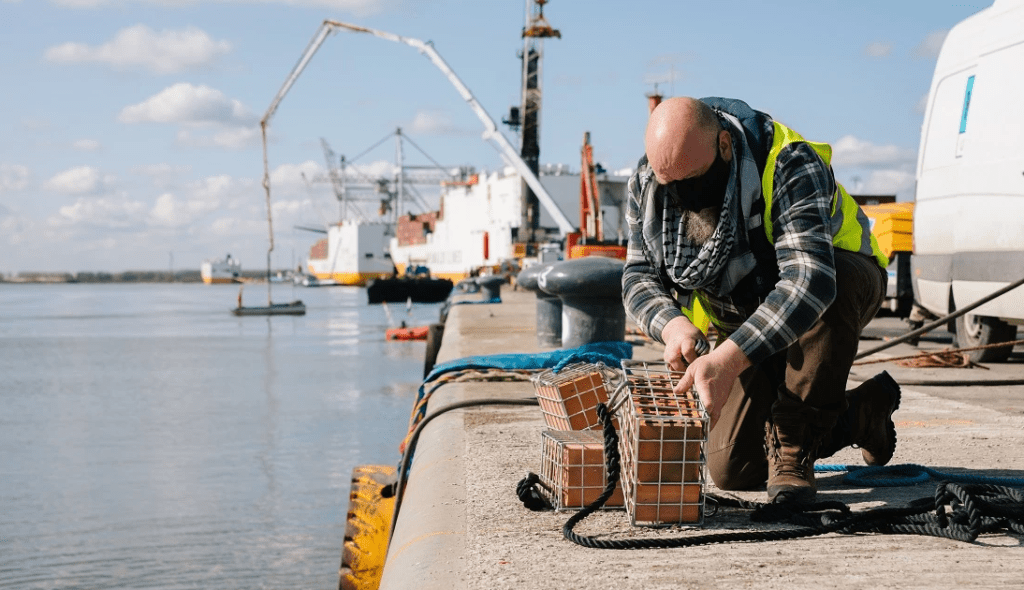A group of biologists from the University of Antwerp are teaming up with the Port in order to monitor shrimp, worms and snails in the water at the docks.
While recent studies have shown that the fish populations and the algae are doing well in the Port of Antwerp, macroinvertebrates haven’t scored as high on similar tests measuring their status.
“Water is vital to the port,” said Agnes Heylen, Technical Manager for Environment at Port of Antwerp. “Port of Antwerp believes it’s important to fulfil our responsibility to society and ensure that the water quality in the port docks scores better.”
Investments were made in recent years towards that end, including installing different types of structures on dock walls and under jetties that could serve as better homes and habitats for the underwater creatures.
“It's pretty logical that a smooth concrete wall is not ideal for animals,” said Stefan Van Damme, a biologist at UAntwerpen. “That is why the walls in the Doeldok, for example, were given different relief structures. Milled-out grooves could be a home for invertebrates. Elsewhere, as at the Lillo Bridge, underwater palisades were fitted with sturdy ropes.”
Related News
- Port of Antwerp expands fleet with energy-efficient tugboats
- Foul odour at Port of Antwerp under investigation
- Port of Antwerp heads international consortium aiming to make European ports greener
- Port of Antwerp anticipates busy terminals after Suez incident
Divers are installing cages at several different locations in the port this week, which they hope to use for monitoring the fauna and take samples.
“We’ll also take underwater images to film any fleeing animals,” said Jonas Schoelynck (UAntwerpen). “Five weeks later, we’ll retrieve the cages and analyse the contents in our lab.”
The goal is to see whether or not the interventions taken so far are having an effect on the invertebrates, and decide where and how to direct future efforts aimed at increasing biodiversity in the dock water.
“Together with the university, we want to map out how we can stimulate the underwater fauna. After all, water is the most important asset of a port and its surroundings,” said port alderman Annick De Ridder.
“In this way, Port of Antwerp wants to be an inspiration to other ports and once again play a pioneering role in the field of sustainability.”
Helen Lyons
The Brussels Times

